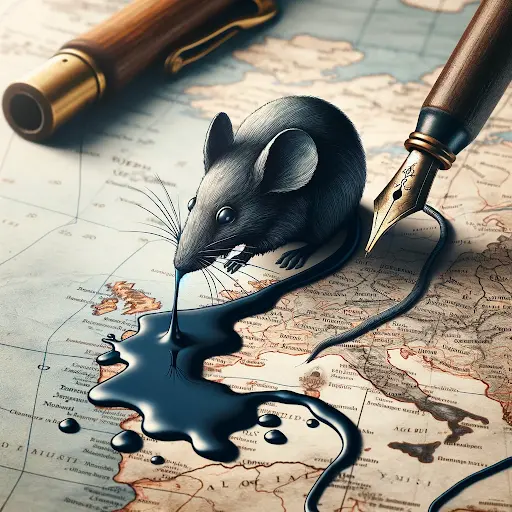Maus book II summary
Updated: 3 March 24
3
Introduction
In the realm of graphic novels, few works are as poignant and powerful as “Maus II” by Art Spiegelman. This sequel to the groundbreaking “Maus” continues to explore the harrowing experiences of Spiegelman’s father during the Holocaust, employing a unique visual metaphor where Jews are depicted as mice and Nazis as cats.
Its significance lies not only in its creative storytelling but also in its ability to convey the indelible scars of history through the lens of personal narrative. Spiegelman, through this work, invites readers into a deeply intimate yet universally resonant tale of survival, memory, and the complexity of the human spirit.

Author’s Background
Art Spiegelman is an author whose qualifications surpass mere academic accolades. His firsthand connection to the Holocaust, through his father’s experiences, imbues his work with authenticity and emotional depth.
Spiegelman is not only a pioneering figure in the world of graphic novels but also a recipient of the Pulitzer Prize, an award that underscores his work’s profound impact and his authoritative stance in literature. His expertise lies in his ability to translate complex historical and emotional truths into a visually engaging format that challenges and expands the boundaries of traditional storytelling.

Main Content of the Review
Summary
“Maus II” delves deeper into the survival story of Spiegelman’s father, Vladek, amidst the atrocities of the Holocaust. It juxtaposes Vladek’s past horrors with the present-day relationship between father and son, revealing the enduring effects of trauma across generations. This sequel not only continues to document the struggle for survival in the face of unimaginable evil but also explores the psychological aftermath, including the challenges of understanding and representation.

Critical Analysis
Spiegelman’s “Maus II” stands as a monumental work for its innovative approach to Holocaust narration. Its strength lies in its stark visual metaphor, which simplifies complex human histories into an accessible and compelling narrative. However, some critics argue that this metaphorical simplification might risk trivializing the subject matter.
Despite this, “Maus II” is widely regarded as a seminal work that has reshaped Holocaust literature by making it accessible to a broader audience and by showcasing the graphic novel’s potential as a serious literary form.

Personal Reflection
Reading “Maus II” was an emotionally stirring experience. The graphic novel format, rather than diluting the gravity of the Holocaust, made the horror and humanity more immediate and visceral. Spiegelman’s ability to weave his family’s story with historical events provided a unique lens through which to understand the indelible impact of such atrocities on individuals and their descendants.
Recommendation
“Maus II” is essential reading not just for fans of graphic novels but for anyone interested in the Holocaust, history, and the exploration of human resilience in the face of darkness. Its unique approach and powerful narrative make it a compelling read for educators, students, and those seeking to understand the complexities of history and memory.
Conclusion
“Maus II” by Art Spiegelman is a testament to the power of graphic storytelling, offering a profound commentary on history, memory, and the human condition. It challenges readers to confront the depths of human cruelty and the resilience of the human spirit. We encourage our readers to delve into this extraordinary work, reflect on its messages, and join the conversation about its impact on literature and history.
FAQs
Why is “Maus II” depicted in a graphic novel format?
Art Spiegelman choose the graphic novel format for its unique ability to convey complex stories through visual metaphors, making the historical and emotional content accessible and impactful.
Can “Maus II” be read without reading the first part?
While “Maus II” can stand on its own, reading “Maus” provides essential background and enriches the understanding of the sequel.
Is “Maus II” appropriate for all ages?
Given its serious subject matter, “Maus II” is best suited for older teenagers and adults who can appreciate its historical and emotional depth.
What awards has “Maus II” received?
Art Spiegelman’s “Maus” series, including “Maus II,” was awarded the Pulitzer Prize, highlighting its significance and impact in literature.
How does “Maus II” contribute to Holocaust education?
“Maus II” offers a unique and powerful perspective on the Holocaust, making it an invaluable resource for educators and students seeking to understand this history through personal narrative and visual storytelling.
Author Bio of the Reviewer
At My Review Book (MRB), we bring together passionate readers and seasoned reviewers to explore the vast world of literature. Our team’s diverse backgrounds and experiences allow us to offer deep, insightful reviews across genres. “Maus II” is a work that touches on history, memory, and the complexities of depicting such narratives, aligning with our commitment to thoughtful, engaging literary analysis.
Please Write Your Comments